














It gives me immense happiness to see our Baby Antraman turn 3 . What started off as a thought, has beautifully shaped into a regular feature with all your inner voice published for all to read and feel .
From the first edition till now, the journey has been so beautiful and full of learning.
The quality of content has improved, the look and feel of the newsletter and above all the reach has increased.
We are thankful and grateful to every contributor who has shaped the Antarman ENewsletter . We have been consistently releasing the newsletter on the date it is supposed to and for this , I applaud for, The editorial team. Their relentless efforts behind the timely release is commendable.
As for me , the Founder of Motherhood club and Editor in Chief of Antarman I take pride in my team Ila Pachauri, Kamal Nimodia & Mukesh Bhatnagar.
I also thank Pooja dixit, who was our Chief Content officer, who was a part of the initial struggle to get the newsletter rolling.
This Edition like always is full of meaningful content and we are glad to see some new names feature here.
I would also like to mention a few contributors who have consistently contributed and would like to express my heartfelt gratitude
Anupama Nair 1.
Manju Lata 2.
Poonam Bhatnagar 3.
Ratan Kumar Agarwala 4.
Swetha Sundar 5.
Suraksha Pruthi Khurana 6.
Shreen Vardhan Sharma 7.
Archana Joshi 8.
Kiran Datta 9
Ranjana Majumdar 10. Umang Sarin 11. Rakesh Pachauri 12.
Happy Reading
Best Regards
Akta Sehgal Malhotra
Founder Motherhood Club





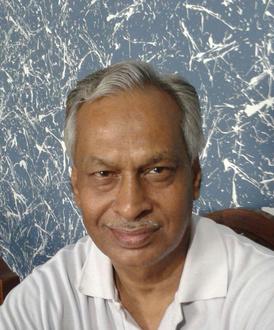
Antarman -As I see it & wish to make it

I had the good fortune of associating with Antarman E- Newsletter since its inception, first as a reader, then a contributor and eventually becoming a member of editorial team under the stewardship of Akta Sehgal Malhotra. The three planks on which the bulletin delved upon were Health Wealth and Happiness and has been following the same with the very active support of the Motherhood Club members, who have been sharing their thoughts, poems and stories, art work. Our Green crusader and multi-talented Ila Pachauri and fellow editorial member Kamal Nimodia are always there in updating on environmental awareness. Editor-in-Chief Akta Sehgal for plays a stellar role in making Antarman a voice of the soul, from setting the texture, graphic and layout and contributing towards the Financial literacy . Personally speaking it has been an enriching experience with Antarman, in as much as while writing book review, I got the very good opportunity of reading the books intensely from the authors perspective, and to some extent in honing my writing skills as well. Working as a team for quite some time has been a learning. With these thoughts I take this opportunity to appeal our esteemed readers and contributors to keep showering their love and helping 'Antarman' to enlarge it's readership base and encouraging budding writers to express themselves through its pages.
Mukesh Bhatnagar


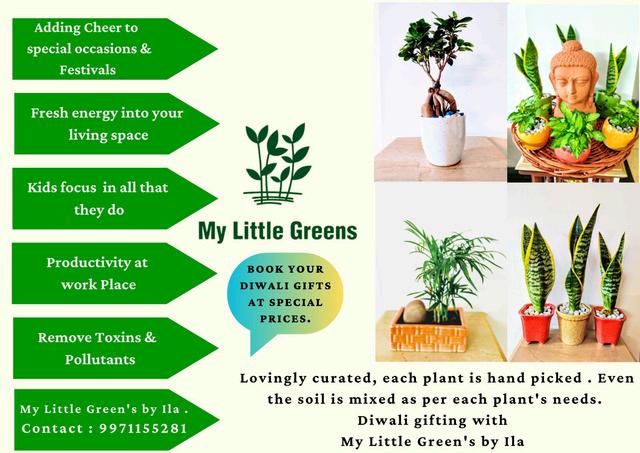




The three pillars on which Motherhood Club stands tall. All our conversations and social drives are around these themes



In today's fast-paced world, maintaining healthy eating habits is crucial for achieving a vibrant lifestyle. With the abundance of processed foods and the pressures of a busy schedule, it can be challenging to make nutritious choices. However, embracing healthy eating habits can lead to improved energy levels, better mood, and a reduced risk of chronic diseases. Here are some practical tips for all individuals seeking to enhance their eating habits.
Whole foods are minimally processed and rich in nutrients. Incorporate a variety of fruits, vegetables, whole grains, and legumes into your diet. These foods are not only packed with essential vitamins and minerals but also provide dietary fibre, which aids digestion and promotes satiety.
Examples:
Breakfast: Start your day with a bowl of oats topped with fresh fruits like bananas, apples, berries or nuts.
Lunch: Enjoy a healthy vegetable curry with brown rice or quinoa. Snacks: Opt for roasted chana (chickpeas) or a handful of nuts like almonds and walnuts. Dinner: Try having early dinner and keep it light. Include wholesome foods rather than starchy foods, ready to eat or frozen foods for dinner.
Traditional Indian foods are nutritious and balanced. Incorporate these into your meals to enjoy the flavours and benefits they offer. Examples:
Dals and Legumes: Lentils, chickpeas, and beans are excellent sources of plant-based protein. Prepare dishes like dal tadka, rajma, or chhole to boost protein intake.
Fermented Foods: Idli, dosa, and dhokla are fermented foods that support gut health. These dishes are rich in probiotics, which aid digestion.
Practicing mindful eating involves paying attention to your hunger cues and savouring each bite. This can help prevent overeating and promote a healthy relationship with food. Tips:
Eat slowly and chew your food thoroughly to enhance digestion. Avoid distractions like television or smartphones while eating.
Strive for balanced meals that include a combination of macronutrients: carbohydrates, proteins, and fats. This ensures that your body receives the necessary nutrients for optimal functioning. Examples:
Breakfast: A plate of poha with vegetables and a side of curd.
Lunch: Brown Rice with Lentils, Vegetables & Curd

Dinner: Grilled fish, Chicken or paneer with a side of mixed vegetable stir-fry and wholegrain roti.
5. Hydration
Staying hydrated is essential for overall health. Water helps regulate body temperature, supports digestion, and flushes out toxins.
Tips:
Drink at least 8-10 glasses of water daily. Include hydrating foods like cucumbers, watermelons, and oranges in your diet.
Processed foods and excessive sugar consumption can lead to weight gain and an increased risk of chronic diseases. Aim to minimize their intake and opt for healthier alternatives.
Examples:
Replace sugary beverages with herbal teas or infused water. Choose whole-grain options over refined grains like white rice and bread.
7. Portion Control
Being mindful of portion sizes can prevent overeating and help maintain a healthy weight. Use smaller plates and listen to your body's signals of fullness.
Tips:
Serve meals in smaller dishes to control portion sizes.
Practice the "plate method" by filling half your plate with vegetables, a quarter with proteins, and a quarter with whole grains.
8. Plan Ahead
Planning meals and snacks in advance can help you make healthier choices and avoid reaching for convenient but unhealthy options.
Tips:
Prepare a weekly meal plan and create a shopping list to ensure you have nutritious ingredients on hand.
Batch-cook meals and store them in portion-sized containers for quick and easy access.
By adopting these healthy eating habits, you can enjoy a balanced and nutritious lifestyle that supports overall well-being. Remember, consistency is key, and small, sustainable changes can lead to significant improvements in your health and quality of life.
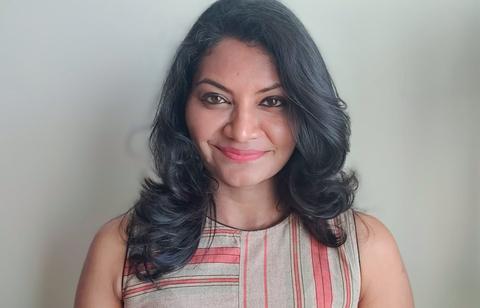

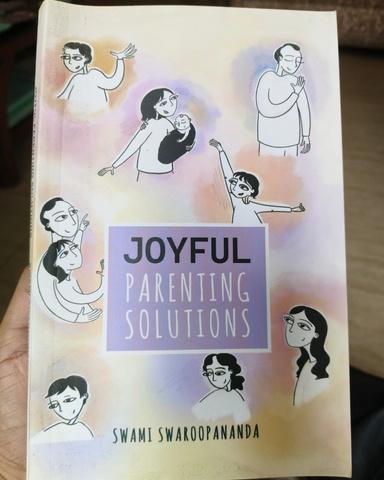
Book Name : 'Joyful Parenting Solutions'
Author Name: Swami Swaroopananda
Review By : Mukesh Bhatnagar
"Joyful Parenting Solutions" is published by Chinmaya Mission Trust, Delhi chapter, in January 2024 and is based on the discourses of Swami Swaroopanand, who is the current Global Head of the Mission, having more than 300 centres all over the world.
In this book Swami Swaroopananda has tried to blend timeless insights and contemporary sensibilities to guide parents through every stage of the parenting journey from prenatal care to nurturing the teenagers. Presented in a Q&A format, it offers a wealth of practical solutions, enabling parents to resolve challenging issues coming their way, as they traverse the unknown and uncertain world of childrearing. Swami ji convincingly answers the questions, that covers the whole gamut of parenting. It is a must read book for all parents, aspiring parents, single and adoptive parents as well. Written in a simple and lucid way, it is spread over ten chapters, with anecdotes from mythology and spiritual realm, makes it an intresting guide. It will help the parents to foster strong connections with their children, to create harmony and joy at home.
I purchased the book from the Mission's Lodhi Road Centre, New Delhi, in March 2024, though my self passing through the grand parenting stage, and found it a learning experience after going it through. It enabled me, to overview the role of our children as parents to our grand children, as well us as grand parents, too.
The book contains 140 pages with some great pointers of affirmation for the nurturing parents. The book is available on Amazon.

When a tree is felled, a stump remains. It may look unaesthetic but a stump plays an important role in the ecosystem. Many of us think that once the tree has dried up, the main trunk is of no use and it gets cut for making furniture etc. Sharing a few important contributions of the stumps of trees:
1. Stumps contribute to the biodiversity by housing flora and fauna. They help in stabilising the ecosystem by creating a balance between fauna and flora .
2. Stumps are home and refuge for several microorganisms, birds, insects, small mammals etc. Birds make nests on them, squirrels and mice make homes in the cavities of the stumps. Multiple types of fungi, algae, ferns, herbs and climbers thrive on the stumps.
3. Stumps help in maintaining the carbon cycle. When the wood of the stump decomposes, it releases carbon dioxide in the atmosphere thereby balancing the carbon cycle.
4. Stumps help in erosion of soil by binding the soil with their roots. They also resist and divert the flow of water during floods. Stumps improve the water retention capacity of soil. Stumps also stabilise the soil around them.
5. Stumps are an important subject of research for scientists and researchers. Stumps help them understand the ecosystem and process of decomposition. They also help in understanding various zoological and botanical aspects of the ecosystem.
6. Stumps help in restoring the nutrients of soil when they gradually decompose. This process improves the fertility of soil and helps in better growth of new fauna developing around them.
Instead of rooting out the stumps, we must preserve them for maintaining a balance in the nature.
- Ila Pachauri
Green Crusader
Founder: My Little Greens by Ila



We have all heard our thoughts shape us and lead to all the actions we take. There are two ways that any human thinks and is basis the mindset we have
Growth Mindset
Fixed Mindset
A growth mindset means that you believe your intelligence and talents can be developed over time. A fixed mindset means that you believe intelligence is fixed—so if you ’ re not good at something, you might believe you’ll never be good at it.
Growth Mindset is obviously progressive in nature as compared to fixed mindset. Knowing this, people are still stuck with the fixed mindset and start to blame the external environment , which in most cases is beyond your control.
How about working on something we have control over. A gradual shift from Fixed to Growth Mindset. A herculean task, but the need of the hour. Times are changing and so is the pace at which things change. We have all realized that the only constant is change and sooner we adapt to it the better it is for us and for the generations to come, A growth mindset has many advantages . Lets try and understand how we can make that shift
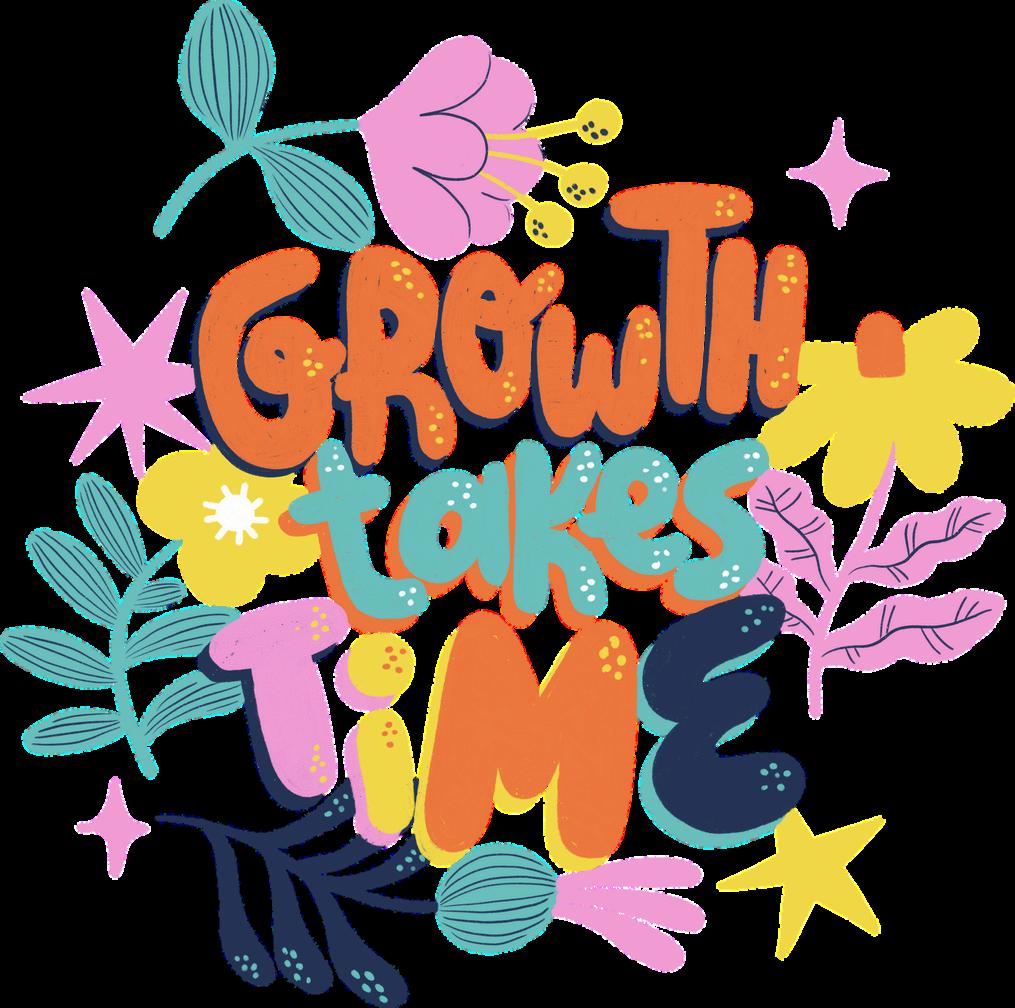
and step in the
with anyone else.
Last But not the least Be Always Work in Progress, a straight line is always the dead end.
The shift in the mindset can lead you to wonders and help you be the change maker for self and many . A growth mindset is an art which needs time, effort and practice along with a quest for knowledge and the zeal to excel.
Akta Sehgal Founder Motherhood Club




Principles of “PAR-Amount” helped investor multiply corpus by 4.58 times
Let me share an experience of Sushma. Sushma reminisces on her hugely successful investment journey that she has completed. On the 5th year, she resisted the temptation to redeem her investments with return of 59%. Then again in 10th year, she was contemplating to redeem it with return of 24%. Well, she thanks herself for staying the course and at the end of 28 years, she earned 15%
In any (road) journey that we take, we encounter many pot-holed roads, highways, expressways and may either get tired or excited. Accordingly we may slow down our speed or move faster based on the underlying condition of the road. In the end we reach our destination. We never “Quit”
Similarly, in our investment journey, the returns earned over different periods are not the same.
Higher returns may help you either reach your destination earlier or you may accumulate a higher corpus than the targeted amount in the same period. The above example is a true reflection that returns could vary in different time periods. The only way to achieve what you wish to is ,to focus on PAR – that shall lead to accumulation of the Wealth needed When we begin our voluntary SIP( Systematic Investment Plan) , our intention is to remain invested for long. A bull-run in the market entices us to consider redeeming from the market much ahead of our time period, as was Sushma’s case (5 years & 10 years). Very high returns justified her to give a serious thought to redeem her investments even though investment horizon was still far away. Instead of being overtly influenced by market conditions, she remained focused on her investment horizon. Her understanding of the principles of compounding and time spent in the market, helped her accumulate a corpus that she had aimed for. She also realized, once she withdraws in the intervening period, she will forego the possibility of accumulating a higher corpus as she will lose out on the possibility of compounding. Admittedly, she earned the lower return for her holding period of 28 years, but in the end it is the corpus (money) that has accrued to her which will help her meet her needs, wants & desires and not the % return.
In conclusion, had Sushma stopped her SIP journey & redeemed after 5 years, she would have been poorer by Rs 5.56 crores.
The combination of DCP( Discipline, Consistency & Patience) leads to PAR- Amount excellence in your investing journey – Patience along with Appreciation leads to Return on Investment. To know more about DCPhttps://wordpress.com/post/manaswealth.wordpress.com/5
Akta Sehgal Founder Manas Wealth



Make me up, Make up!
That's what gets me love, Make me up, Make up!
That's what gets me dough. Make me up, Make up!
That's what gets me my identity.
Identity that I love and accept.
Identity that gets rejected,
Identity that is God's creation,
Identity that has no name mostly referred as 'It'.
The same identity becomes "She" when covered with makeup.
The journey from "It to She" is honest and brutal.
The journey from "It to She" is sacred for me.
The journey from "It to She" is hated.
The journey from "It to She" is faked. The journey from" It To She" he is neither made up nor makeup.
The journey of "It to She" is my own discovery, doesn't ever need a Make up.
- Akta Sehgal Malhotra



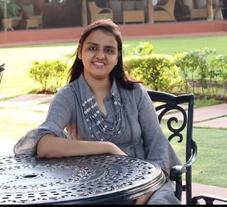











Bitter Truth
"Zainab aapa, you look hideous in that red shalwar suit. Red isn't your colour", Ghazal mocked her elder sister. "Ghazal, you look like a big fat duck in your yellow anarkali", Zainab retorted. The sisters were as different as chalk and cheese. The elder one, Zainab, was doing postgraduate in architecture at Lucknow University while Ghazal had joined History first year at a local college. Though the sisters often masked their fights as playful banter, there was a dormant animosity that simmered beneath the surface, fueled by their differing ambitions and constant comparisons. Zainab, the elder by three years, was the epitome of grace and success. She excelled academically, was captain of the school’s and university's debate team, and was admired by everyone who knew her. Ghazal, on the other hand, was often seen as the shadow of her sister—bright, but overshadowed by Zainab's brilliance.
Their parents, while loving, were openly proud of Zainab’s accomplishments, often praising her in front of Ghazal. This favoritism bred a deep-seated rivalry between the two. Ghazal felt a growing resentment and inadequacy and often had unceremonious thoughts about Zainab.




It was Id and the whole house rang with festive fervour. The house was decorated with lights and both the girls and their mother were decked up in beautiful and ornate attires and jewellery. The aroma of biryani, puris, mutton stew, sevaiyan and kheer wafted in the house. There was a horde of guests chit chatting and swarming about the house. Suddenly a fight erupted between Zainab and Ghazal. What began with a minor disagreement over a family photograph and accompanying comments on instagram quickly escalated into a full-blown confrontation with Zainab saying, "You don't resemble Abba, Ammi or me. Makes me sure you ' re adopted".
“You always get the best of everything Aapa", Ghazal wailed and shouted, her voice quivering "Mom and Dad never notice anything I do. I’m always second place. Even I feel I truly don't belong in this family".
Ghazal stormed out of the house and retreated to the storeroom, a place anyone rarely visited. There, she accidentally stumbled upon a box labeled "Important Documents."
Curious, Ghazal opened the box and found a stack of papers, among which was a yellowed adoption certificate with Zainab ' s name on it. Shocked, she flipped through the documents, her heart racing as she read details about her elder sister's adoption. She felt as if the ground beneath her had shifted.
Suddenly, she felt a hand upon her shoulder and was shocked to see that Zainab and her mother had entered the room noiselessly. Their mother Madeena stifled a cry and tried to snatch the paper away from Ghazal's hand but Zainab had already seen what she needed to see. She stared at the document wordlessly with tears swimming in her eyes.
Madeena hugged Zainab saying she never wanted this bitter truth exposed in this way. "When we were childless for over a decade, your Abba was the one who pushed for adoption. We adopted you from a poor labourer couple in our ancestral village who were living a hand to mouth existence and didn't want to add another mouth to feed, to their already five children. Your entry into the family brought us immense joy and prosperity. Then we were blessed with Ghazal after two years and our family was complete. We chose you with so much love and felt it wasn’t necessary for you or Ghazal to know anything. In an effort to be impartial, we favoured you more than Ghazal so that no one would accuse us of being partial to our biological daughter. That backfired as Ghazal started feeling resentful towards us " . Madeena was weeping uncontrollably.
Ghazal stepped forward and hugged Zainab tightly saying, "Aapa, I was born from Ammi's womb but you were birthed from her heart. The words on this document shouldn't come between all these years of love and affection."
That Id was truly a festival of bonding and embracing for the family in the truest sense. Zainab learned to embrace her own identity with pride, while Ghazal became more mindful and appreciative of her sister’s feelings and achievements. Their childish rivalry slowly gave way to a deeper, more honest connection and the revelation of the bitter truth ultimately strengthened their relationship. The sisters discovered that family bonds could be forged through openness and love, even when hidden truths and raging storms come to light.
- Swetha Sundar














Can't gain financial freedom? These 6 spiritual tips can help you get the right mindset. Money doesn't have to be just about numbers. While money brings material wealth, it also ensures stress free living and some sort of security. Afterall, all of us depend upon money to manage our lives. Most of us are stressed about our finances and often do not know where to start.
Let me share 6 spiritual principles which can improve our financial literacy:
1. Use a mindset of abundance instead of pondering upon scarcity.
2 Set intentions for your financial goals.
3. Practice meditation to reduce financial stress.
4. Apply mindfulness to your spending habits.
5. Find your purpose beyond material wealth.
6. Use visualization technique for financial success.
I conclude this article with one last phrase "True wealth isn't just in your bank account - it lies in how you live your values."
- Dr. Priya
Kaul Hope Creator and Life coach





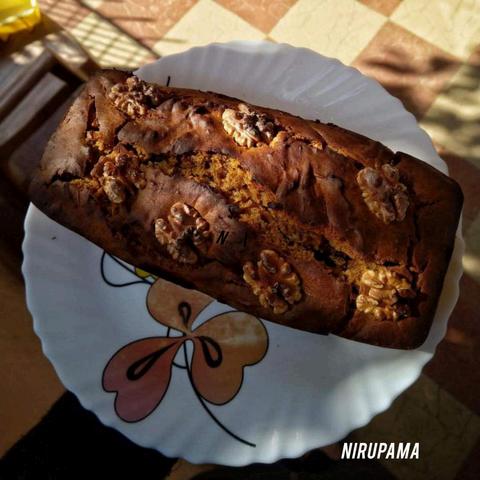
Quinoa Biryani/ pulav
Most of us are on the look out for healthy yet tasty recipes. Here is one recipe that won't disappoint you at all.

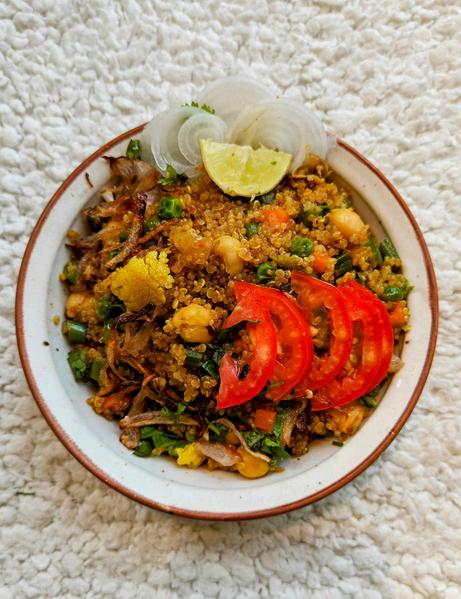

Let's make Quinoa pulav today.
Ingredients
Quinoa ------ 1/2 cup ( soaked for 3-4 hours )
Finely chopped onion slices ----- 1/2 cup
Finely chopped mix vegetables like capsicum, carrots, cauli flower, peas, beans, cabbage , broccoli -----1 .5 cups
Slit green chillies -----2
Biryani masala ----1 teaspoon
Tejpatta ( Bay leaf )----- 1 leaf
Few pieces of Cinnamon
Cloves ----5-7
Black cardamom -----1
Cumin seeds -----1/2 teaspoon
Oil - 2 tablespoon
Turmeric powder--- 1/2 teaspoon
Red chilli powder ---- 1/4 teaspoon
Salt to taste
Wash the quinoa several times before boiling it in a big pot of water. Boil for 5-7 minutes, strain through a strainer and keep aside . Blanch all the vegetables except capsicum for 3-4 minutes in boiling water.
Take another pan , heat oil in it . Add cumin seeds, cinnamon sticks, bay leaf, black cardamom and cloves ,then add slit chillies and onions . Fry the onions till they are crispy and golden .
Take out some fried onions for garnish and add capsicum and all the blanched vegetables. If you have boiled kala chana or kabuli chana, you may add a handful of those too .....
Now add biryani masala, turmeric powder,red chilli powder and salt . Stir fry this mixture for a couple of minutes before adding the boiled quinoa. Mix well , adjust the flavourings as per your taste . Cover and cook on slow fire for 3-4 minutes.Adding half a teaspoon of lemon juice is optional.Transfer the quinoa pulav to a serving dish and garnish with sliced tomatoes, onion rings and lemon wedges . Serve with chilled vegetable raita and mint coriander chatney.














WE ARE HAPPY TO SHARE THAT if any MHC member wishes to join hands or collaborate with either of our associates or Partners, s/he can please get in touch with team Motherhood Club for the same.


